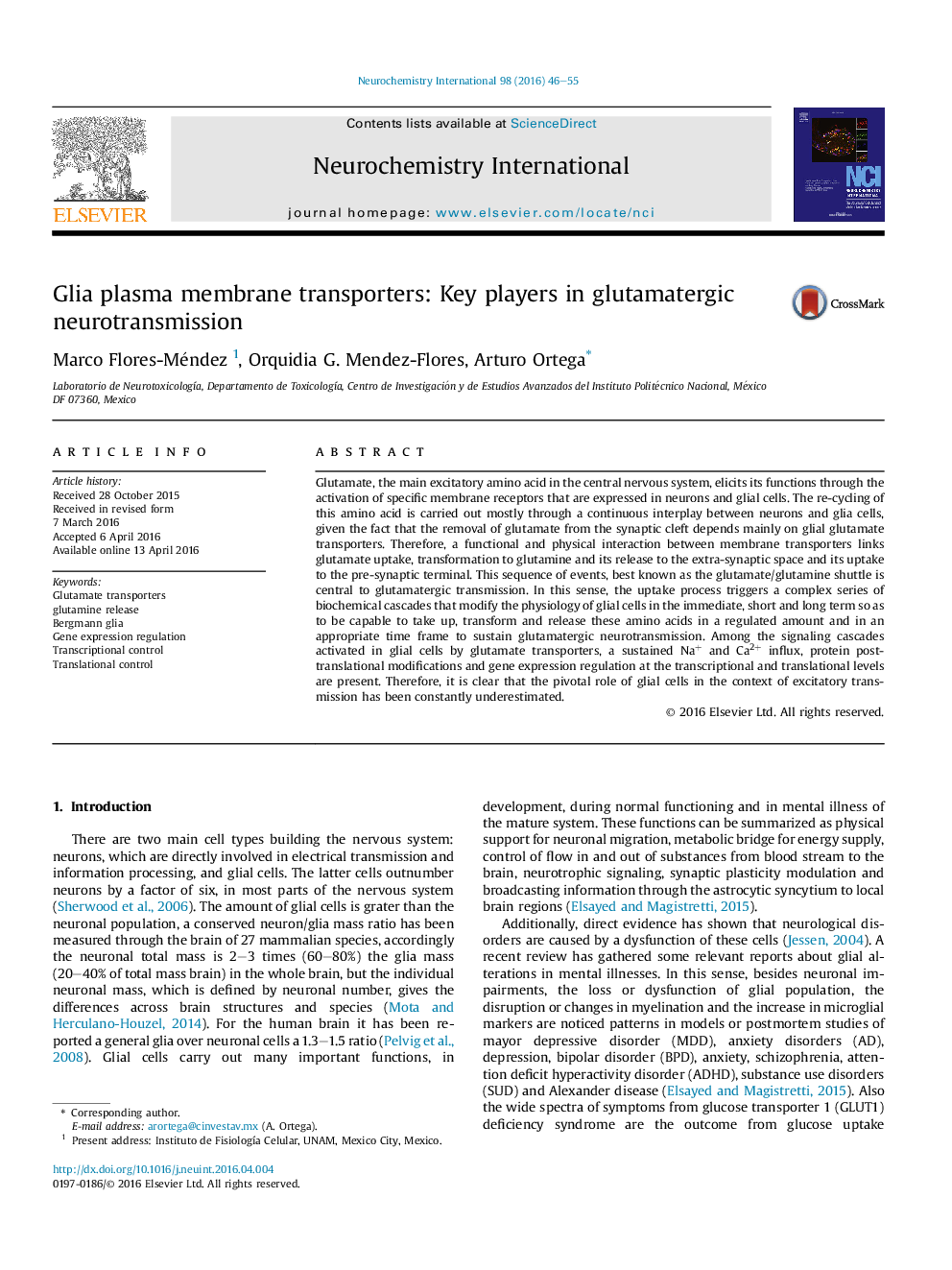| Article ID | Journal | Published Year | Pages | File Type |
|---|---|---|---|---|
| 2200249 | Neurochemistry International | 2016 | 10 Pages |
•Glial glutamate transporters are main actors in Glutamatergic and GABergic neurotransmission.•Glial glutamate transporters signaling modulate the glial response to released Glutamate and GABA.•Glial glutamine transport participates in glutamatergic transmission.•GABAergic activity is highly dependent on Glu.
Glutamate, the main excitatory amino acid in the central nervous system, elicits its functions through the activation of specific membrane receptors that are expressed in neurons and glial cells. The re-cycling of this amino acid is carried out mostly through a continuous interplay between neurons and glia cells, given the fact that the removal of glutamate from the synaptic cleft depends mainly on glial glutamate transporters. Therefore, a functional and physical interaction between membrane transporters links glutamate uptake, transformation to glutamine and its release to the extra-synaptic space and its uptake to the pre-synaptic terminal. This sequence of events, best known as the glutamate/glutamine shuttle is central to glutamatergic transmission. In this sense, the uptake process triggers a complex series of biochemical cascades that modify the physiology of glial cells in the immediate, short and long term so as to be capable to take up, transform and release these amino acids in a regulated amount and in an appropriate time frame to sustain glutamatergic neurotransmission. Among the signaling cascades activated in glial cells by glutamate transporters, a sustained Na+ and Ca2+ influx, protein posttranslational modifications and gene expression regulation at the transcriptional and translational levels are present. Therefore, it is clear that the pivotal role of glial cells in the context of excitatory transmission has been constantly underestimated.
